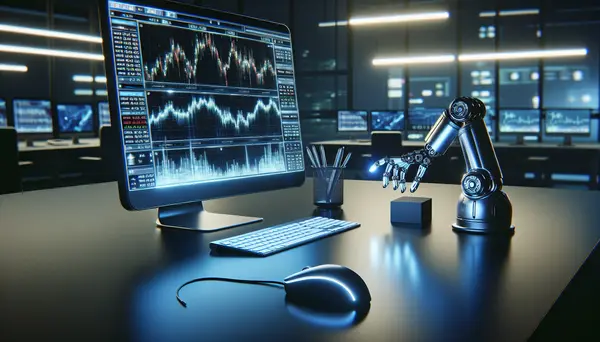As an avid trader, you've probably heard the buzz around trading algorithms. But what are they, and how can they help you make smarter trades? Let's explore the world of trading algorithms and find out!
At its core, a trading algorithm is a set of instructions that a computer program follows to execute trades automatically. These algorithms can be based on a variety of factors, such as technical indicators, economic news, or even social media sentiment.
One of the biggest advantages of trading algorithms is their ability to analyze vast amounts of data quickly and efficiently. They can identify trading opportunities in real-time and execute trades with lightning-fast speed. This can give traders a significant edge in the market, especially in highly volatile situations.
Another advantage of trading algorithms is their ability to remove emotion from the trading process. As human traders, we are susceptible to emotional biases that can lead to poor decision-making. By using an algorithm, you can eliminate these biases and make more objective, data-driven decisions.
So, what types of trading algorithms are out there? Let's take a look at a couple of examples.
The first type of algorithm is the trend-following algorithm. This strategy involves identifying trends in the market and using technical indicators to determine when to enter and exit trades. Traders using this algorithm might use tools like moving averages, MACD, or Bollinger Bands to identify trends and make trades accordingly.
Another type of algorithm is the mean reversion algorithm. This strategy involves identifying when an asset has deviated from its average price and betting that it will eventually revert back to that average. Traders using this algorithm might use tools like RSI or stochastic oscillators to identify overbought or oversold conditions in the market.
When it comes to choosing a trading algorithm, there are a few things to keep in mind. First, make sure you understand the strategy behind the algorithm and how it works. You should also consider the level of risk involved and whether the algorithm is suitable for your trading goals and style.
In conclusion, trading algorithms can be a powerful tool for traders looking to gain an edge in the market. By leveraging the power of data and automation, these algorithms can help you make more informed and objective trading decisions. So, why not give them a try and see how they can improve your trading game?
Frequently Asked Questions
What are trading algorithms?
Trading algorithms, or algo trading, is the use of computer programs and systems to trade markets based on predefined strategies or in a predetermined manner. This type of trading attempts to leverage speed and data processing, which can be far more than the human mind is capable of, to profit in the markets.
How does automated trading work?
Automated trading uses a computer program that creates orders and automatically submits them to a market center or exchange. The computer algorithms are designed to make decisions on factors such as timing, price, and quantity of the order, and in some cases, initiating the order without human intervention.
What are the benefits of using trading algorithms?
Trading algorithms can process vast amounts of data much quicker than a human trader, make decisions based on the latest market data, and execute trades more efficiently. They can operate 24/7, eliminating the need for constant market monitoring. Additionally, trading algorithms remove the emotional aspect of trading which can often prejudice judgment, leading to better overall results.
Who uses trading algorithms?
Trading algorithms are used by investment banks, mutual funds, pension funds, and other institutional traders to divide large trades into several smaller trades to manage market impact and risk. They are also used by individual investors and traders looking to automate their trading strategies.
Are trading algorithms suitable for beginners?
While the concept of automated trading might seem complex, the advent of online trading platforms has made it easier for beginners to start using trading algorithms. However, it is recommended to first understand the basics of markets and trading, develop a sound trading strategy, and thoroughly test the algorithm before deploying it to live trading.












